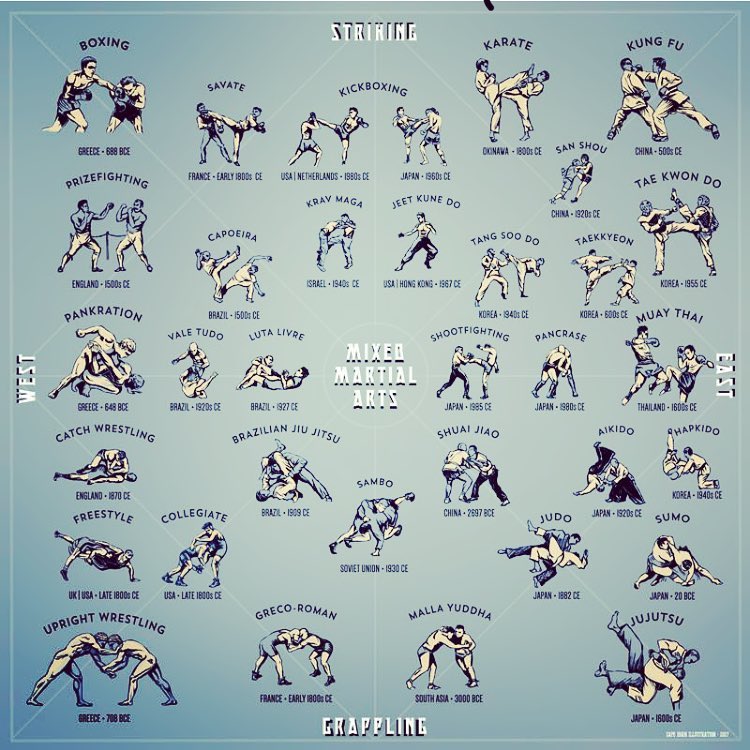Come Discover The Captivating Globe Of Martial Arts, Where Ancient Customs Fulfill Contemporary Performance - A Trip Right Into Background And Ideology Awaits.
Come Discover The Captivating Globe Of Martial Arts, Where Ancient Customs Fulfill Contemporary Performance - A Trip Right Into Background And Ideology Awaits.
Blog Article
Content By-Ingram Montoya
Enter the old world where martial arts were born out of necessity in varied areas. Cultures crafted special fighting designs linked with historical contexts. Methods progressed over centuries through dedicated practice and social exchanges. Today, modern martial arts blend standard components for optimal performance. Philosophically, martial arts emphasize self-control, self-improvement, and harmony. Regard, humility, and equilibrium are foundational principles assisting professionals towards growth and durability. Discover the midsts of this abundant history and ideology to uncover the profound impacts forming this enduring self-control.
Origins of Martial Arts
Fighting style originated in numerous areas worldwide, advancing as useful battle systems to defend against threats. These old battling designs were developed out of requirement, with each society crafting strategies matched to their distinct environments and challenges. From emperado kajukenbo grappling arts of Jujutsu in Japan to the striking methods of Martial art in China, martial arts were deeply intertwined with the historical, social, and social material of their particular societies.
In Japan, the samurai class refined martial arts like Kenjutsu, the art of the sword, which later on advanced right into the much more promoted kind of Kendo. At the same time, in Brazil, Capoeira emerged as a mix of dancing and battle, produced by enslaved Africans as a way to resist injustice. Each fighting style carries with it an abundant history and philosophy, reflecting the worths and beliefs of individuals who exercised them.
As you look into the beginnings of martial arts, you uncover a tapestry of human resourcefulness, strength, and the stubborn spirit of warriors throughout time.
Development of Techniques
Through centuries of technique and improvement, fight methods within different martial arts have actually gone through a profound advancement. From https://www.standard.co.uk/news/crime/jason-bell-london-primrose-hill-old-bailey-neighbours-b1099448.html like Kung Fu and Karate to a lot more contemporary techniques such as Brazilian Jiu-Jitsu and Krav Maga, the development of techniques has actually been driven by a mix of cultural influences, useful applications, and technical innovations.
One significant facet of this advancement is the cross-pollination of methods in between different martial arts. As an example, methods from typical Japanese Jiu-Jitsu were included right into the development of Judo by Jigoro Kano in the late 19th century. This blending of designs has actually resulted in the advancement of crossbreed martial arts like Mixed Martial Arts (MMA), which integrate components of striking, grappling, and entry methods.
In addition, the advancement of methods has been formed by the raising focus on performance and efficiency in combat. Experts have actually constantly sought to improve their techniques via extensive training, trial and error, and competitors, resulting in the advancement of extremely specialized and efficient combating styles. Generally, the evolution of methods in martial arts shows the vibrant nature of fight and the recurring mission for enhancement and innovation.
Thoughtful Structures
Exploring the underlying philosophical concepts of martial arts gives understanding right into their core worths and directing beliefs. At the heart of lots of martial arts self-controls is the concept of technique itself. By training your body and mind to function as one natural unit, you grow self-control that expands beyond the dojo or fitness center right into daily life. This technique incorporates regard, humility, and self-control, forming not simply your physical abilities but additionally your personality.
One more basic philosophical structure in martial arts is the concept of continual self-improvement. The trip of mastering a fighting style is nonstop, with specialists continuously making every effort to far better themselves, both literally and psychologically. This concentrate on growth promotes resilience, perseverance, and a growth mindset that can be applied to all facets of life.
Moreover, martial arts highlight the significance of consistency and balance. Methods are made to use a challenger's energy versus them, highlighting the concept of yielding and redirecting force as opposed to meeting it head-on. This philosophy extends to interpersonal relationships, advertising serene resolutions and mutual understanding. By embracing these thoughtful structures, martial musicians not only improve their battle abilities yet also cultivate a way of living fixated personal growth, regard, and harmony.
Conclusion
In conclusion, the history and viewpoint of martial arts offer an abundant tapestry of tradition, technique, and self-improvement.
Consider example the story of Bruce Lee, who revolutionized martial arts by blending various styles and philosophies to develop his very own unique type of Jeet Kune Do.
Through dedication and innovation, martial artists remain to push boundaries and influence others to reach their complete potential both in battle and in life.
